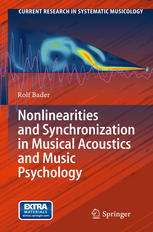

Most ebook files are in PDF format, so you can easily read them using various software such as Foxit Reader or directly on the Google Chrome browser.
Some ebook files are released by publishers in other formats such as .awz, .mobi, .epub, .fb2, etc. You may need to install specific software to read these formats on mobile/PC, such as Calibre.
Please read the tutorial at this link: https://ebookbell.com/faq
We offer FREE conversion to the popular formats you request; however, this may take some time. Therefore, right after payment, please email us, and we will try to provide the service as quickly as possible.
For some exceptional file formats or broken links (if any), please refrain from opening any disputes. Instead, email us first, and we will try to assist within a maximum of 6 hours.
EbookBell Team

0.0
0 reviewsNonlinearities are a crucial and founding principle in nearly all musical systems, may they be musical instruments, timbre or rhythm perception and production, or neural networks of music perception. This volume gives an overview about present and past research in these fields. In Musical Acoustics, on the one hand the nonlinearities in musical instruments often produce the musically interesting features. On the other, musical instruments are nonlinear by nature, and tone production is the result of synchronization and self-organization within the instruments. Furthermore, as nearly all musical instruments are driven by impulses an Impulse Pattern Formulation (IPF) is suggested, an iterative framework holding for all musical instruments. It appears that this framework is able to reproduce the complex and perceptionally most salient initial transients of musical instruments. In Music Psychology, nonlinearities are present in all areas of musical features, like pitch, timbre, or rhythm perception. In terms of rhythm production and motion, self-organizing models are the only ones able to explain sudden phase-transitions while tapping. Self-organizing neural nets, both of the Kohonen and the connectionist types are able to reproduce tonality, timbre similarities, or phrases. The volume also gives an overview about the signal processing tools suitable to analyze sounds in a nonlinear way, both in the Fourier-domain, like Wavelets or correlograms, and in the phase-space domain, like fractal dimensions or information structures. Furthermore, it gives an introduction to Physical Modeling of musical instruments using Finite-Element and Finite-Difference methods, to cope with the high complexity of instrument bodies and wave couplings. It appears, that most musical systems are self-organized ones, and only therefore able to produce all unexpected and interesting features of music, both in production and perception.